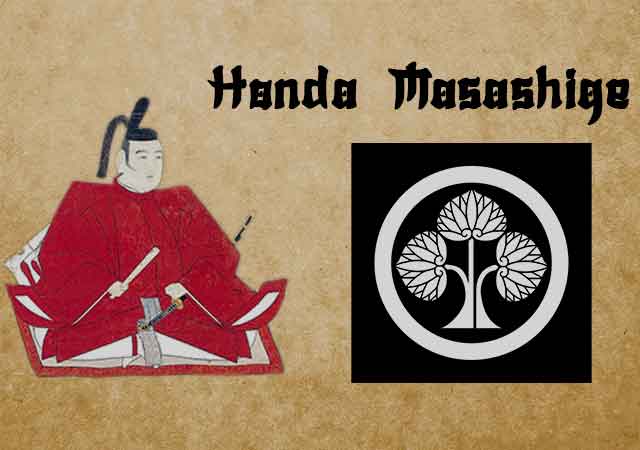
Honda Masashige, the second son of Tokugawa Ieyasu's trusted advisor Honda Masanobu, began his service alongside his father under Tokugawa Ieyasu and later his son, the future second Shogun, Hidetada. At the age of 18 in 1597, Masashige was involved in a fatal dispute with Okabe Souhachi, leading him to flee. He then served daimyo Otani Yoshitsugu for two years, followed by two years under Ukita Hideie. Despite his unconventional path, his esteemed family name and warrior reputation opened doors to various positions.
Over the next 14 years, Masashige served different lords in seven regions, ultimately establishing the Kaga Honda branch in present-day Ishikawa Prefecture. The Battle of Sekigahara in late 1600 divided the nation into two factions, East led by Tokugawa Ieyasu, and West led by Ishida Mitsunari. Despite fighting for the opposition, Masashige's exceptional performance caught the attention of Ieyasu.
The Western forces were defeated, and Lord Ukita Hideie fled to safety, while Masashige sought refuge in Omi Province (now Shiga Prefecture). He received offers from Lord Kobayakawa Hideaki and Lord Maeda Toshinaga before joining Lord Fukushima Masanori. Two years later, he accepted a significant position with Maeda Toshinaga, bridging the Maeda and Tokugawa houses.
In 1604, Masashige left the Maeda clan to become Chief Retainer to the daimyo of Echigo, Uesugi Kagekatsu. He married the daughter of Uesugi's top general Naoe Kanetsugu, aiming to strengthen relations between the Uesugi and Tokugawa clans. After rebuilding trust, he amicably parted ways with the Uesugi and returned to the Maeda clan in 1611, becoming the first head of the Kaga Honda clan.
In 1614, he participated in the Winter Siege of Osaka, facing off against and ultimately losing to Sanada Nobushige (Yukimura) near the Sanada Maru complex south of Osaka Castle.
The unconventional samurai, Honda Masashige, passed away at the age of 68 in 1647. He bore witness to the final major battles of the late Sengoku period, the end of Japan's civil war era, and served as a peacemaker between some of the most significant clans in Japanese history.
See also
-
Yamagata Masakage

Masakage was one of Takeda Shingen’s most loyal and capable commanders. He was included in the famous list of the “Twenty-Four Generals of Takeda Shingen” and also belonged to the inner circle of four especially trusted warlords known as the Shitennō.
-
Yagyu Munenori

Yagyū Munenori began his service under Tokugawa Ieyasu while his father, Yagyū Muneyoshi, was still at his side. In 1600, Munenori took part in the decisive Battle of Sekigahara. As early as 1601, he was appointed a kenjutsu instructor to Tokugawa Hidetada, Ieyasu’s son, who later became the second shogun of the Tokugawa clan.
-
Yagyu Muneyoshi

A samurai from Yamato Province, he was born into a family that had been defeated in its struggle against the Tsutsui clan. Muneyoshi first took part in battle at the age of sixteen. Due to circumstances beyond his control, he was forced to enter the service of the Tsutsui house and later served Miyoshi Tōkei. He subsequently came under the command of Matsunaga Hisahide and in time became a vassal first of Oda and later of Toyotomi.
-
Endo Naozune

Naozune served under Azai Nagamasa and was one of the clan’s leading vassals, renowned for his bravery and determination. He accompanied Nagamasa during his first meeting with Oda Nobunaga and at that time asked for permission to kill Nobunaga, fearing him as an extremely dangerous man; however, Nagamasa did not grant this request.
-
Hosokawa Sumimoto

Sumimoto came from the Hosokawa clan: he was the biological son of Hosokawa Yoshiharu and at the same time the adopted son of Hosokawa Masamoto, the heir of Hosokawa Katsumoto, one of the principal instigators of the Ōnin War. Masamoto was homosexual, never married, and had no children of his own. At first he adopted Sumiyuki, a scion of the aristocratic Kujō family, but this choice provoked dissatisfaction and sharp criticism from the senior vassals of the Hosokawa house. As a result, Masamoto changed his decision and proclaimed Sumimoto as his heir, a representative of a collateral branch of the Hosokawa clan that had long been based in Awa Province on the island of Shikoku. Almost immediately after this, the boy became entangled in a complex and bitter web of political intrigue.
-
Honda Masanobu

Masanobu initially belonged to the retinue of Tokugawa Ieyasu, but later entered the service of Sakai Shōgen, a daimyo and priest from Ueno. This shift automatically made him an enemy of Ieyasu, who was engaged in conflict with the Ikkō-ikki movement in Mikawa Province. After the Ikkō-ikki were defeated in 1564, Masanobu was forced to flee, but in time he returned and once again entered Ieyasu’s service. He did not gain fame as a military commander due to a wound sustained in his youth; nevertheless, over the following fifty years he consistently remained loyal to Ieyasu.
-
Honda Masazumi

Masazumi was the eldest son of Honda Masanobu. From a young age, he served Tokugawa Ieyasu alongside his father, taking part in the affairs of the Tokugawa house and gradually gaining experience in both military and administrative matters. At the decisive Battle of Sekigahara in 1600, Masazumi was part of the core Tokugawa forces, a clear sign of the high level of trust Ieyasu placed in him. After the campaign ended, he was given a highly sensitive assignment—serving in the guard of the defeated Ishida Mitsunari, one of Tokugawa’s principal enemies—an obligation that required exceptional reliability and caution.
-
Hojo Shigetoki

Hōjō Shigetoki, the third son of Hōjō Yoshitoki, was still very young—only five years old—when his grandfather Tokimasa became the first member of the Hōjō clan to assume the position of shogunal regent.

